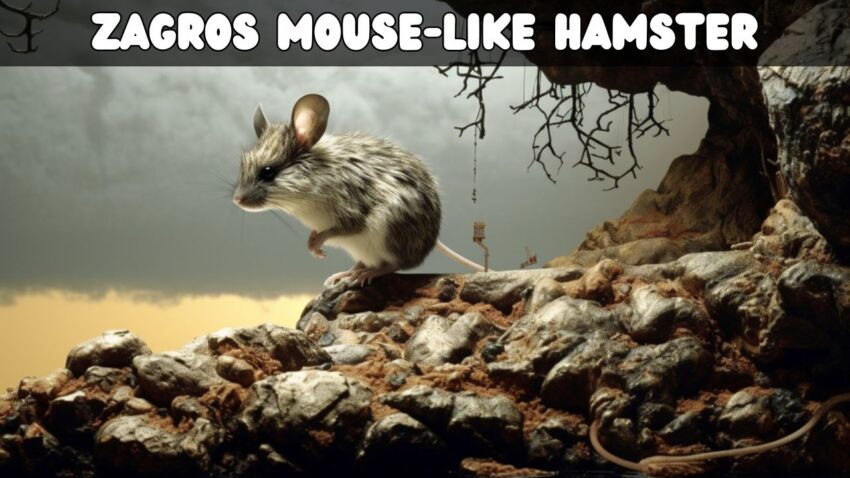Hamsters have always captured the fascination of pet lovers and researchers alike, but not all hamsters are created equal. Among this diverse group lies a unique gem: the Zagros Mouse-like Hamster. As its intriguing name suggests, this species holds a tale of its own, nestled between the worlds of hamsters and mice, and deeply rooted in the vast terrains of nature.
Welcome to the World of the Zagros Mouse-like Hamster
Venture into a realm lesser-known, where the diminutive Zagros Mouse-like Hamster reigns. Native to specific pockets of our vast globe, this species has carved its niche, showcasing a blend of characteristics that make it a subject of interest for many.
What to Expect in This Comprehensive Guide
Prepare to embark on an educational voyage that delves deep into the life, habits, and peculiarities of the Zagros Mouse-like Hamster. From its natural habitats, dietary preferences, to tips on responsible care, this guide promises a holistic understanding of this exceptional creature.
The Importance of Understanding the Zagros Mouse-like Hamster
While they might be smaller in size, the significance of understanding and appreciating the Zagros Mouse-like Hamster is immense. Beyond just another pet or species, they stand as a testament to nature’s diversity, reminding us of the vastness of the animal kingdom and our responsibility towards it.
Overview
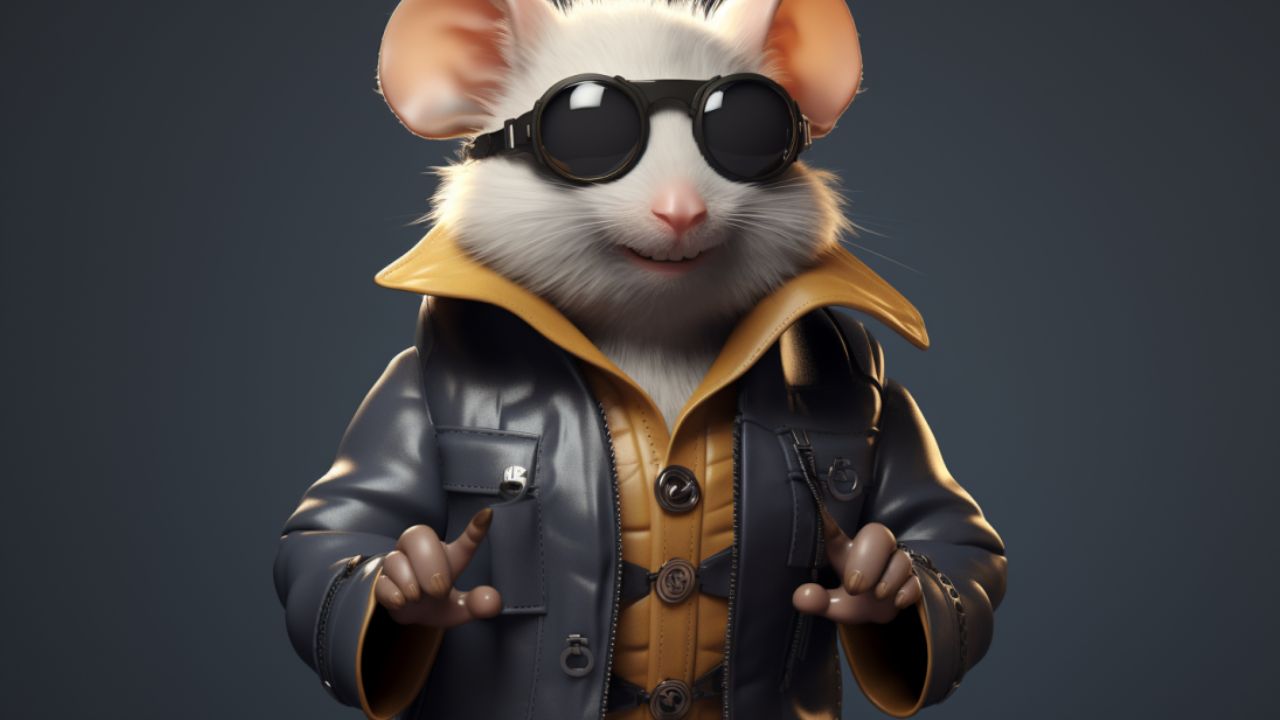
The Zagros Mouse-like Hamster, with its intriguing name and distinctive features, is more than just another species in the vast hamster family. Its unique journey, from its historical relevance to its present-day occurrences both in the wild and in our homes, is a tale of adaptability and charm. As we navigate the complex tapestry of its existence, we realize the richness it adds to our understanding of biodiversity.
Tracing the Roots: Historical and Cultural Significance
Originating from the rugged landscapes of the Middle East, the Zagros Mouse-like Hamster has a historical lineage that’s as captivating as its name. Ancient texts and regional folklore often hint at a small creature, adept at navigating the rocky terrains, echoing the traits of this hamster. Over time, this species, with its resilience and adaptability, has woven itself into the cultural fabric of its native regions. Traditional tales, especially from local tribes, often feature this hamster as a symbol of agility and tenacity, qualities that are revered and narrated to younger generations.
Domestic Love and Wild Wanderings: Where You Might Find Them
Today, while the Zagros Mouse-like Hamster is a treasured pet in many households across the globe, its wild counterparts continue to thrive in their natural habitats. These hamsters have found a special place in the hearts of pet enthusiasts who admire their spirited nature and curious demeanor. In the wild, they predominantly roam the rugged terrains of the Zagros Mountains, skillfully navigating the challenges of their environment. Their ability to adapt, both to the comforts of a domestic setting and the unpredictabilities of the wild, is a testament to their versatile nature.
Natural Habitat

The Zagros Mouse-like Hamster, as the name suggests, has strong roots in specific geographical regions. Its natural habitat tells a story of adaptation, survival, and the innate ability to thrive in unique environmental conditions. As we journey through its preferred terrains and climates, we gain a deeper appreciation for this species’ resilience and the intricate balance of nature.
From Which Corners of the Earth Do They Hail?
The Zagros Mouse-like Hamster traces its origins to the sprawling and rugged terrains of the Zagros Mountains, which span across the western part of Iran and into eastern Iraq. These mountainous regions, interspersed with valleys and plateaus, offer the hamster an environment abundant in resources and natural hideouts. The maze-like structure of the rocky terrains provides ample opportunities for the hamsters to burrow and create nests, away from the prying eyes of predators.
Home Sweet Home: Climate and Geographic Preferences
Adapted to a temperate climate, the Zagros Mouse-like Hamster is attuned to the seasonal shifts of its mountainous home. The mild, wet winters and dry, hot summers of the Zagros region have shaped the hamster’s habits and daily routines. During the warmer months, they are known to seek shelter in the cooler crevices of rocks or in their burrows to escape the heat. The varied vegetation, ranging from dense woodlands to sparse grasslands, serves as both a food source and a protective canopy. This blend of climate and geography has not only determined the hamster’s behavioral patterns but also its dietary preferences, ensuring its survival and proliferation over the centuries.
Physical Characteristics
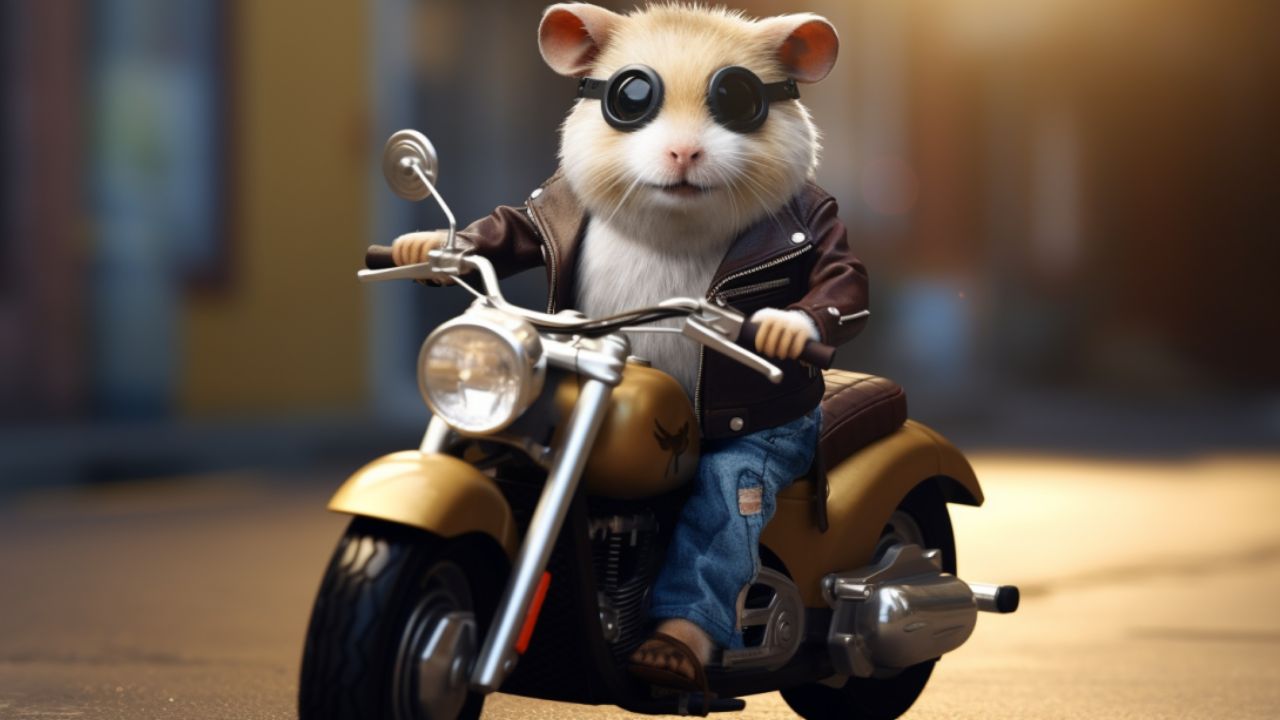
The Zagros Mouse-like Hamster is more than just a name; its physical attributes distinguish it in a world teeming with various hamster species. Unraveling the layers of its physicality, we discover nuances that make it unique, adapted perfectly to its environment, and a wonder to observe.
More Than Meets the Eye: Detailed Physical Description
The Zagros Mouse-like Hamster, in stature, is petite, typically ranging between 3 to 4 inches in length. Its coat is a harmonious blend of soft browns and creamy whites, mimicking the earthy terrains of its natural habitat. This coloration serves as an effective camouflage, allowing it to blend seamlessly with its surroundings. The fur is dense and slightly plush, providing insulation during the cooler months.
One of the standout features of this hamster species is its eyes. They are relatively large compared to its face, with a bright and alert expression. These eyes are not just for show; they offer the hamster a wide field of vision, crucial for spotting predators and locating food.
Its dainty paws are adept for both burrowing and climbing, showcasing the versatility of this hamster in navigating its environment. The tail, although short, is covered with a sparse layer of fur and acts as a rudder, assisting in balance and swift movements.
Picture Perfect: Imagery to Enhance Understanding
While words can paint a vivid picture, nothing compares to visual imagery. Throughout this article, readers will encounter a curated selection of photographs and illustrations that spotlight the Zagros Mouse-like Hamster in various poses and settings. From close-up shots that highlight facial features to images capturing its full body against the backdrop of its natural habitat, these visuals serve to deepen one’s appreciation and understanding of this unique species.
Behavior and Temperament
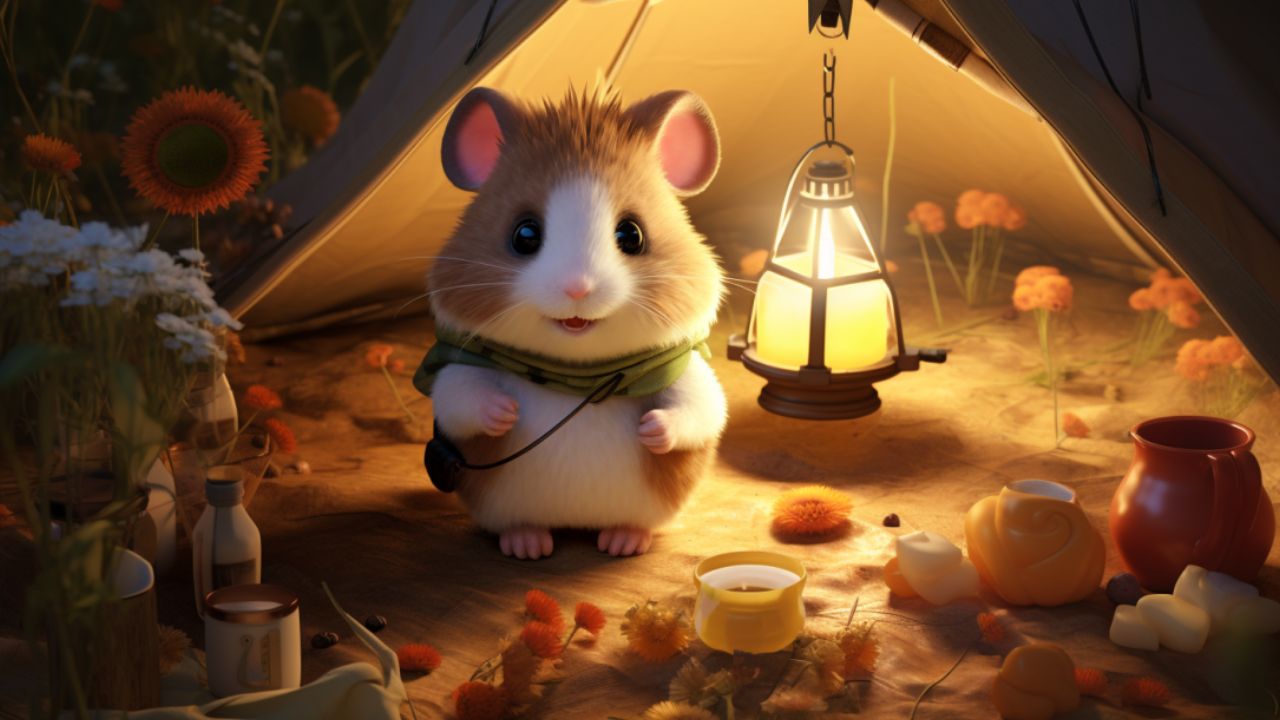
In the intricate tapestry of the animal kingdom, every species boasts its distinct behavioral patterns and temperamental quirks. The Zagros Mouse-like Hamster is no exception. Understanding the subtleties of its behavior gives us insights not just into the creature itself but also into the evolutionary adaptations it has developed over time.
Daily Routines and Noteworthy Activities
Zagros Mouse-like Hamsters are primarily nocturnal creatures. As the sun sets and the world quiets down, they spring into action. The nighttime hours are a flurry of activity, from foraging for food, grooming, to playfully scampering around. Their burrowing tendencies are especially prominent during the dusk and dawn hours, crafting intricate underground networks for shelter and food storage.
One fascinating routine involves their method of food collection. With cheek pouches that can expand to hold significant amounts of food, they gather sustenance during their active hours and transport it back to their burrows. These stockpiles act as crucial reserves during lean times or when external conditions are unfavorable.
Social interactions among these hamsters are another focal point. While they can be territorial at times, particularly during the breeding season, there are moments of social grooming and playful chases, signifying bonds that are essential for survival and social learning.
Uniqueness in Behavior: Traits Only They Exhibit
Setting the Zagros Mouse-like Hamster apart from its kin are a few unique behaviors. One of these is their distinctive vocal communication. Unlike the regular squeaks and chirps synonymous with hamsters, they emit a series of high-pitched, melodic notes, especially when feeling threatened or during courtship rituals.
Another intriguing behavior is their method of sand-bathing. Unlike regular dust baths seen in other rodents, they prefer to roll and frolic in fine sand. This activity aids in keeping their fur clean, free from excess oils, and acts as a parasite deterrent.
Lastly, their nesting habits are noteworthy. Rather than just creating a simple burrow, the Zagros Mouse-like Hamster is known to line its nesting area with soft materials, often plucked from plants or collected from its surroundings. This not only provides added comfort but also an extra layer of insulation against the cool nights of its native habitat.
Diet and Nutrition

The dietary habits of any species are pivotal not only for survival but for the overall health, vitality, and longevity of the organism. Zagros Mouse-like Hamsters, with their diverse and omnivorous diet, are no exception. Their food intake is a reflection of the ecosystem they inhabit and their evolutionary lineage, offering us an intimate look into their daily lives and habitat’s bounty.
From Grains to Greens: What’s on Their Plate?
Zagros Mouse-like Hamsters have an eclectic palette, often driven by the seasonality and availability of food in their natural habitat. Primarily, their diet consists of seeds and grains, which provide them with essential carbohydrates and energy. This is crucial, especially considering their active nocturnal lifestyle.
However, they don’t restrict themselves to just grains. Vegetation, including fresh leaves, stems, and fruits, plays a significant role in their diet, supplying vital vitamins and minerals. This not only ensures their nutritional requirements are met but also keeps their digestive systems healthy and functional.
In the wild, they are also known to indulge in a bit of animal protein. Small insects, larvae, and even tiny vertebrates occasionally feature in their diet. These offer a valuable protein boost, essential for tissue repair and growth.
Dietary Dos and Don’ts: Ensuring Optimal Health
When keeping a Zagros Mouse-like Hamster as a pet, it’s crucial to mimic their natural diet as closely as possible. A mix of commercial hamster food, supplemented with fresh vegetables and occasional protein treats like mealworms or cooked chicken, usually suffices. Fresh water must be available at all times.
However, there are some important dietary considerations to be aware of:
- Moderation is Key: While treats are always appreciated, they should be given sparingly. Foods high in fat, such as sunflower seeds, can lead to obesity if given in excess.
- Toxic Foods: Some human foods can be toxic to hamsters. It’s essential to avoid offering them chocolates, citrus fruits, onions, and anything seasoned with garlic or spices.
- Fiber Intake: A hamster’s digestive system benefits from fibrous foods. Offering hay or fibrous veggies can assist in digestion and prevent issues like constipation.
- Calcium and Protein: Especially for growing, pregnant, or nursing hamsters, a boost in calcium and protein can be beneficial. This can be achieved by offering calcium-rich vegetables or an occasional piece of cheese.
Being aware of these dietary dos and don’ts ensures the well-being of the Zagros Mouse-like Hamster, guaranteeing them a life that’s not just long but vibrant and healthful.
Housing and Environment
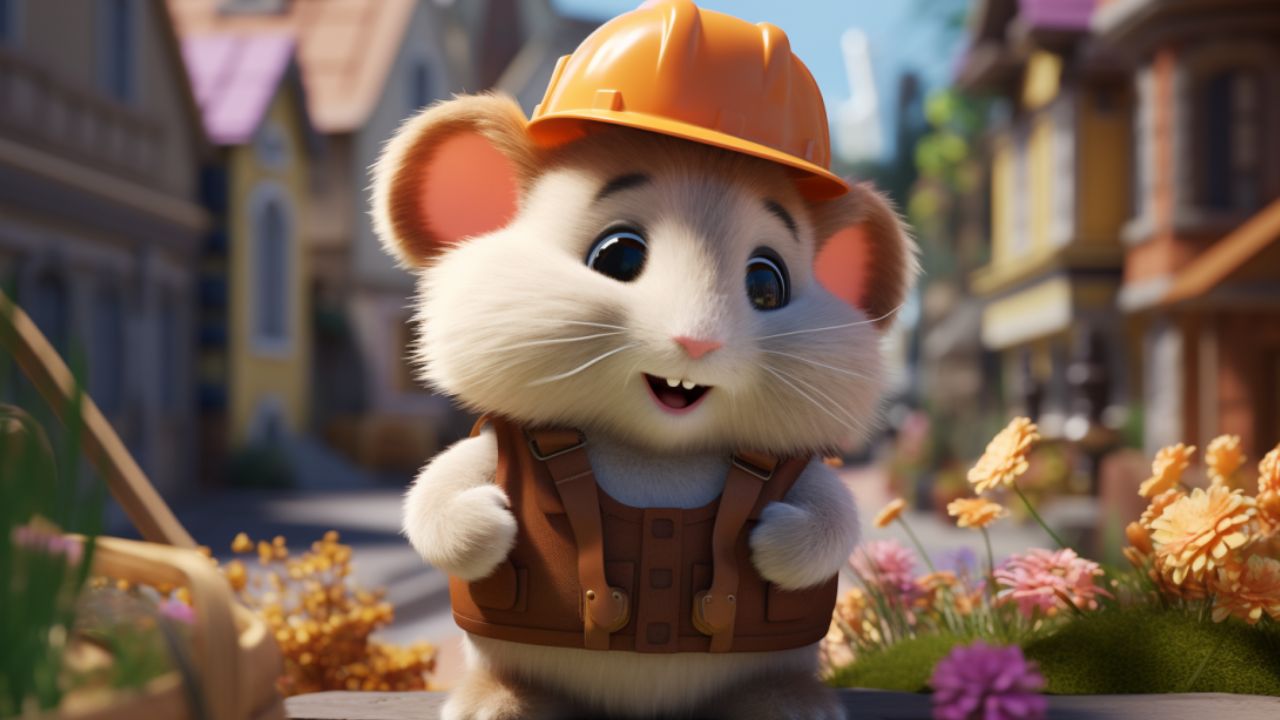
Ensuring that a Zagros Mouse-like Hamster feels at home and safe is fundamental to its well-being and overall health. While these hamsters are versatile and can adapt to a variety of environments in the wild, when it comes to domestic settings, there are certain standards and elements that need to be considered. After all, a comfortable hamster is a happy hamster.
Crafting the Cozy Corner: Housing Essentials
The first step in ensuring your Zagros Mouse-like Hamster feels at home is to provide a spacious and secure cage. This species is known for its agility and curiosity, so the cage needs to cater to its active nature:
- Size Matters: A cage with a minimum dimension of 24 x 12 x 12 inches is recommended. This gives them ample space to explore, exercise, and play.
- Material and Construction: Wire cages with a solid base are ideal. They allow for good ventilation while preventing potential escapes.
- Bedding: Opt for absorbent, non-toxic bedding like aspen shavings or recycled paper products. Avoid cedar or pine shavings, as they contain oils that can be harmful.
- Hideouts and Toys: Hamsters love to burrow and hide. Providing small houses, tunnels, and other hideouts is essential. Additionally, toys like running wheels, climbing structures, and chewable items can keep them entertained.
- Cleanliness: Regular cleaning is crucial to prevent the buildup of waste and ensure the hamster’s environment remains hygienic.
The External World: Key Environmental Factors to Consider
Beyond the immediate housing, several external factors play a role in the hamster’s well-being:
- Temperature: The Zagros Mouse-like Hamster thrives in temperatures between 65°F and 75°F. Avoid placing the cage in direct sunlight or drafty areas.
- Lighting: These hamsters are crepuscular, which means they are most active during the dawn and dusk. Therefore, it’s essential to provide a natural light-dark cycle to align with their internal clock.
- Noise: While they can adapt to household sounds, it’s important to place their cage in a relatively quiet spot, away from loud noises or constant disturbances.
- Safety from Predators: If there are other pets in the household, like cats or dogs, ensure the hamster’s cage is placed in a secure location, out of their reach.
By carefully crafting the housing and being mindful of the environment around it, you can create a harmonious habitat for the Zagros Mouse-like Hamster, ensuring its happiness, health, and longevity.
Health and Wellness

The well-being of the Zagros Mouse-like Hamster goes beyond just proper nutrition and a comfortable habitat. Like all pets, they have specific health requirements and are susceptible to certain ailments. By recognizing potential health issues early and taking appropriate preventive measures, owners can ensure a long, healthy life for their hamster.
Common Health Hurdles and Proactive Prevention
Zagros Mouse-like Hamsters are generally hearty creatures, but they do have their set of health challenges:
- Respiratory Issues: Changes in breathing patterns or wheezing can indicate respiratory problems, often linked to cold drafts, sudden temperature changes, or bacterial infections.
- Digestive Troubles: Diarrhea or constipation can arise from a sudden change in diet or the consumption of spoiled food. It’s essential to maintain a consistent, high-quality diet.
- Overgrown Teeth: These hamsters have teeth that continuously grow. Offering chew toys or wooden blocks can help wear them down. Regularly check their teeth to ensure they aren’t becoming too long or causing the hamster discomfort.
- Wet Tail: A severe diarrheal disease, Wet Tail can be fatal if not treated promptly. Keeping the cage clean and avoiding sudden dietary changes can help prevent this ailment.
- Tumors: Like many rodents, hamsters can develop tumors as they age. Regularly checking your hamster during play and grooming sessions can help in early detection.
Regularly observing your hamster’s behavior, appetite, and physical appearance can alert you to many of these potential problems before they become severe.
When to Ring the Vet: Signs to Watch Out For
While Zagros Mouse-like Hamsters are resilient, certain signs should prompt an immediate visit to a veterinarian:
- Lethargy or Unusual Stillness: If your hamster is less active than usual or doesn’t respond to stimuli, it might be unwell.
- Loss of Appetite: Refusal to eat or drink for extended periods is a concerning sign.
- Discharge: Any discharge from the eyes, nose, or ears could indicate an infection.
- Bald Spots or Skin Irritations: This could suggest parasites, fungal infections, or other skin conditions.
- Difficulty Breathing: Labored breathing or constant sneezing may be signs of respiratory issues.
- Change in Droppings: Watch out for unusually soft, hard, or oddly-colored droppings.
In summary, the best approach to maintaining your Zagros Mouse-like Hamster’s health is a combination of preventive care, regular observation, and timely medical intervention when needed. By being vigilant and proactive, you can ensure your hamster remains a vibrant and cherished member of your household for its entire lifespan.
Breeding

Breeding the Zagros Mouse-like Hamster can be a rewarding experience for enthusiasts and professionals alike. Yet, it requires a deep understanding of their life cycle and a commitment to ensuring ethical and responsible practices. Breeding hamsters isn’t just about producing more pets; it’s about enhancing the species, maintaining genetic diversity, and ensuring a healthy, happy environment for both the parents and the offspring.
The Cycle of Life: Breeding Basics
Understanding the breeding habits of the Zagros Mouse-like Hamster is paramount for success:
- Maturity: Generally, these hamsters reach sexual maturity around 8 to 12 weeks of age. However, it’s advisable to wait until they’re slightly older before introducing potential mates.
- Estrous Cycle: Female Zagros Mouse-like Hamsters come into heat (estrus) approximately every four days. This is the optimal time for mating.
- Gestation Period: After successful mating, the gestation period is roughly 16 to 21 days. It’s essential to provide the pregnant female with a nutritionally rich diet and a peaceful environment during this time.
- Post-birth Care: Once the pups are born, disturbance should be minimal. It’s crucial to give the mother enough food and fresh water, as nursing can be demanding on her resources.
Ethics in Focus: Responsible Breeding Practices
The decision to breed should never be taken lightly, and there are several ethical considerations to keep in mind:
- Purpose of Breeding: Breeding should never be done on a whim or purely for commercial gain. Instead, it should focus on preserving the species’ health and vitality.
- Overpopulation: Given the rapid reproductive rate of hamsters, breeders must ensure they have adequate facilities to house all offspring and avoid unnecessary breeding that contributes to overpopulation.
- Genetic Diversity: Close inbreeding can lead to health problems and genetic defects. Responsible breeders should be well-versed in the lineage of their hamsters to prevent such issues.
- Potential Homes: Before breeding, it’s responsible to ensure that there are homes waiting for the potential offspring or that you have the capacity to care for them long-term.
- Health Checks: Both parent hamsters should be thoroughly vet-checked to ensure they’re free from genetic disorders or communicable diseases.
In summary, while breeding Zagros Mouse-like Hamsters can be an enriching experience, it comes with significant responsibility. Adhering to ethical standards ensures the well-being of the hamsters and contributes positively to the species’ future.
FAQs

The world of the Zagros Mouse-like Hamster is vast and fascinating, prompting numerous questions from potential pet owners and enthusiasts. Here, we address some of the most frequently asked queries, offering clarity and dispelling misconceptions.
Clearing Common Queries: Answers to Frequently Asked Questions
- How big do Zagros Mouse-like Hamsters grow? The average adult Zagros Mouse-like Hamster reaches a size of about 8 to 12 cm in length, with slight variations based on genetics and environmental factors.
- What’s the average lifespan of a Zagros Mouse-like Hamster? With proper care, a healthy environment, and a balanced diet, these hamsters typically live for 2 to 3 years, though some may live slightly longer.
- Are they nocturnal? Yes, like most hamster species, the Zagros Mouse-like Hamster is primarily nocturnal. They’re most active during the night and prefer to rest during the daytime.
- Can they cohabitate with other hamsters? It’s generally not recommended to house different hamster species together, as it can lead to territorial disputes and potential harm. If you’re considering housing two of the same species together, it’s essential to monitor their behavior closely and ensure ample space to avoid conflicts.
- What’s the best substrate or bedding for them? Aspen shavings or paper-based beddings are ideal. Avoid cedar or pine shavings as they can release harmful oils that may irritate the hamster’s respiratory system.
- Do Zagros Mouse-like Hamsters need a running wheel? Yes, they are active creatures and benefit significantly from having a wheel in their cage for exercise. Ensure the wheel is solid (not wire) to prevent injuries.
- How often should their cage be cleaned? It’s advisable to do a partial clean (removing soiled bedding and replacing it) at least once a week and a full clean (emptying the cage, cleaning it, and replacing all the bedding) every 3 to 4 weeks.
Addressing these common questions can help new and potential owners provide the best care possible for their Zagros Mouse-like Hamsters. However, remember that each hamster is an individual, and what works for one might not work for another. Observing and understanding your hamster’s specific needs and behaviors is crucial.
In Summary

The world of hamsters is vast, but the Zagros Mouse-like Hamster stands out with its unique characteristics, behavior, and cultural significance. From its natural habitat to its quirks, this species offers an enriching experience for both researchers and pet owners alike.
Reflecting on the Richness of the Zagros Mouse-like Hamster
The Zagros Mouse-like Hamster isn’t just another species on a long list of rodents. Its unique characteristics, natural behaviors, and dietary needs offer insights into the intricacies of Mother Nature. Its history, geographical distribution, and adaptation to domestic life shed light on the dynamic relationship between animals and humans. By understanding its physical attributes, behavior, and needs, we grow in appreciation for this wonderful creature and the richness it brings to our lives.
A Parting Message: Share, Adopt, and Care Responsibly
Our exploration into the life and nature of the Zagros Mouse-like Hamster underscores the importance of informed pet ownership. Knowledge isn’t just power—it’s a pathway to compassion, care, and responsibility. As you come away from this guide, remember the importance of treating these creatures with respect and love.
If considering adopting one, ensure you’re prepared to offer a lifelong commitment. For those already proud owners, continue to strive for excellence in their care. And for everyone, share the knowledge. In spreading awareness about the Zagros Mouse-like Hamster, we can collectively ensure their well-being, both in the wild and in our homes.

